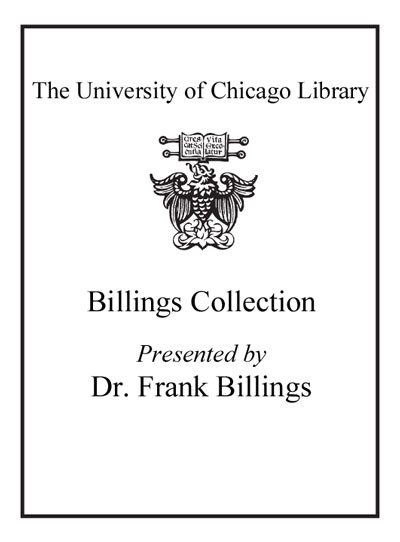Current management in child neurology /
Saved in:
| Edition: | 4th ed. |
|---|---|
| Imprint: | Hamilton, Ont. : BC Decker ; Shelton, Conn. : People's Medical Pub. House, 2009. |
| Description: | xiv, 808 p. : ill. ; 28 cm. |
| Language: | English |
| Subject: | |
| Format: | Print Book |
| URL for this record: | http://pi.lib.uchicago.edu/1001/cat/bib/7539737 |
Table of Contents:
- Preface
- Section 1. Clinical Practice Trends
- 1. Common Neurologic Complaints and Conditions
- 2. Managing Common Neurological Disorders: Role of the primary Care Practitioner
- 3. The Neurologic Examination
- 4. Neurodiagnostic Tests: Their Indication and Selection
- 5. Child Neurology Education of Medical Students, Pediatricians and Adult Neurologists
- 6. The Internet in Child Neurology
- 7. Excelling at the Art of Medicine
- 8. A Primer on Practice Management
- Section 2. The Office Visit
- Headache
- 9. Migraine in Childhood and Adolescence
- 10. Migraine Variants and Mimics
- 11. Abortive Therapy for Migraine
- 12. Preventive Therapy for Pediatric Migraine
- 13. Chronic Daily Headache
- 14. Psychosocial Aspects of Pediatric Headache
- 15. Biofeedback for Childhood Migraine
- 16. Current Pharmacotherapy for Migraine
- Seizures and Epilepsy
- 17. What is Epilepsy?
- 18. Febrile Seizures
- 19. First Unprovoked Seizure
- 20. Staring Spells
- 21. Partial Seizures
- 22. Generalized Seizures
- 23. First-Choice Antiepileptic Drugs
- 24. Home Management of Breakthrough Seizures
- 25. Management of Infantile Spasms (West's Syndrome)
- 26. Recurrent Seizures
- 27. Discontinuing Anti-Epileptic Drugs in Childhood Epilepsy
- 28. Paroxysmal, Nonepileptic Disorders of Childhood
- 29. The Ketogenic Diet
- 30. Epilepsy Surgery and Cortical Stimulation
- 31. Pediatric Epilepsy: Comorbidity and Quality of Life
- 32. Psychosocial Challenges of Epilepsy in Adolescence
- 33. Epileptic Encephalopathy
- 34. Current Pharmacotherapy for Pediatric Seizures and Epilepsy
- 35. Neurologic Assessment of Behavioral Disorders
- Neurobehavioral Disorders
- 36. Clinical Evaluation of ADHD
- 37. Comorbidity and Symptom Mimicry: Implications for Assessment and Treatment
- 38. ADHD Psychosocial Intervention: Parent Training and Social Skills Training
- 39. Treatment of ADHD: Individual Child and Family-Based Therapies
- 40. The Role of the Pediatric Neurologist in the Management of ADHD
- 41. Current Pharmacotherapy for ADHD
- School Readiness
- 42. Is My Child Ready for School?
- 43. An Introduction to Pediatric Neuropsychological Evaluation
- 44. Speech and Language Development and Disorders
- 45. Learning Disabilities
- 46. Developmental Dyspraxia
- Developmental Delay
- 47. Diagnostic Approach to Developmental Delay
- 48. Children at Risk: Social Disadvantage and Neurodevelopmental Functioning
- 49. Cerebral Palsy
- 50. Spastic Paresis
- 51. Neurodegenerative Disorders
- 52. Mitochondrial Cytopathies
- 53. Mental Retardation
- 54. Down Syndrome
- 55. Other Chromosomal Disorders
- 56. Rett Syndrome
- 57. Inborn Errors of Metabolism
- 58. Autistic Spectrum Disorders
- 59. Child Abuse and Neglect: Issues for Neurologists
- 60. Rehabilitation: The Role of Occupational Therapy and Physical Therapy
- Other Neurological Complaints and Conditions
- 61. Small, Large, or Abnormally Shaped Heads
- 62. Microcephaly-Acquired
- 63. Sleep Disturbances
- 64. Breath-Holding Spells
- 65. Human Immunodeficiency Virus 1 and Acquired Immune Deficiency Syndrome in Infants and Children
- 66. Bell's Palsy
- 67. Management of Dizziness in Children
- 68. Fainting and Syncope
- 69. Spinal Muscular Atrophy
- 70. Hereditary Neuropathy
- 71. Neuromuscular Junction Disorders
- 72. Muscular Dystrophy and Myopathy
- 73. Pediatric Neurotransmitter Disorder
- 74. Ataxia, Clumsiness and Tremor
- 75. Treatment of Tic Disorders
- 76. Paroxysmal Movement Disorders
- 77. Chorea
- 78. Visual System Problems
- 79. Childhood Depression
- 80. Conversion Reaction
- 81. Neurofibromatoses
- 82. Tuberous Sclerosis Complex
- 83. Sturge-Weber Syndrome
- 84. Hypomelanosis of Ito
- 85. Brainstem and Cerebellar Malformations
- 86. Acquired Demyelination of the Central Nervous System
- Section 3. The Hospitalized Child
- 87. Neurologic Conditions Arising From Tropical and Subtropical Regions
- 88. Neonatal Seizures
- 89. Facial Sysmorphism in the Neonate and Infant
- 90. Status Epilepticus
- 91. Meningitis and Encephalitis
- 92. Traumatic Brain and Spinal Cord Injuries in Children
- 93. Neonatal Hypotonia
- 94. Congenital Muscular Dystrophies
- 95. Injury to the Preterm Brain
- 96. Injury to the Term Brain
- 97. Birth Brachial Plexus Palsy
- 98. Altered States of Consciousness
- 99. Increased Intracranial Pressure
- 100. Evaluation and Management of Acute Headache
- 101. Brain and Spinal Cord Tumors
- 102. Pseudotumor Cerebri: Idiopathic Intracranial Hypertension
- 103. Central Nervous System Vascular Malformations in Pediatric Patients
- 104. Pediatric Intracranial Aneurysms
- 105. Stroke and Cerebrovascular Disease
- 106. Vasculitis
- 107. Guillain Barr Syndrome
- 108. Neural Tube Defects and Spinal Dysraphism
- 109. Neurocognitive Complications of Sickle Cell Disease
- 110. Pain Management
- 111. Brain Death in Children


